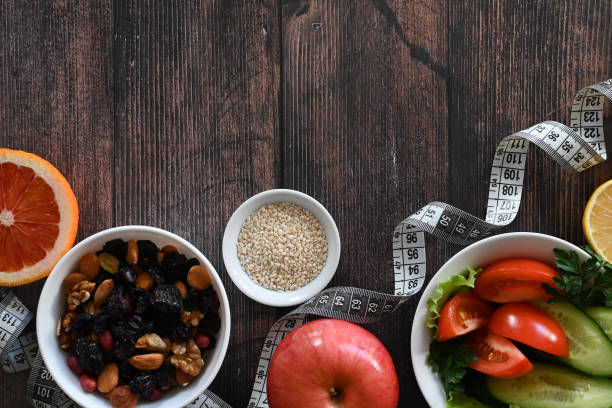Kinds of Diets
Discover the Benefits of a Low Residue Diet and Feel Amazing
Are you looking to improve your digestive health and feel amazing? Look no further than a low residue diet. With its focus on low-fiber foods, a low residue diet can offer a variety of benefits for those with sensitive digestive systems or certain medical conditions. By reducing the amount of undigested food in the intestines, a low residue diet can help alleviate symptoms such as bloating, gas, and diarrhea.
Additionally, it may aid in the healing process for individuals recovering from a gastrointestinal surgery or flare-up of inflammatory bowel disease. Whether you’re seeking relief from digestive discomfort or simply want to optimize your gut health, exploring the benefits of a low residue diet may be the perfect solution for you.
What is a Low Residue Diet?
A low residue diet is a sort of eating plan designed to limit the amount of undigested food and waste in the intestines. It is frequently suggested for those who want to take control of their digestive health or manage symptoms caused by illnesses like Crohn’s disease, ulcerative colitis, or diverticulitis. Individuals who follow a low residue diet might assist relieve symptoms like diarrhea, abdominal pain, and cramping.
A low residue diet primarily focuses on limiting the consumption of high-fiber foods such as whole grains, fruits, and vegetables, which can contribute to increased stool size. Instead, the emphasis is on eating readily digestible, low-fiber meals like white bread, refined cereals, lean meats, and prepared fruits and vegetables. It’s crucial to remember that a low residue diet should be followed under the supervision of a healthcare expert or certified dietitian, who can help customize the diet to individual needs and guarantee its benefits.
Who Should Follow a Low Residue Diet?
A low residue diet is usually indicated for people who have symptoms such frequent diarrhea, stomach pain, cramping, or excess gas. A low residue diet may especially give benefits for people who have inflammatory bowel disorders such as Crohn’s disease or ulcerative colitis, as well as those who have diverticulitis or other digestive issues. However, before beginning a low residue diet, speak with a healthcare practitioner or certified dietitian to ensure that it is suitable for your individual condition and nutritional requirements.
Benefits of a Low Residue Diet
Following a low residue diet can provide various benefits for people who have digestive troubles. A low residue diet, which reduces the quantity of undigested food and waste material in the intestines, can help relieve symptoms including diarrhea, abdominal pain, and cramping. This can lead to a higher quality of life and better treatment for illnesses like Crohn’s disease, ulcerative colitis, and diverticulitis.
In addition to symptom relief, a reduced residue diet can help to rest the digestive system. Limiting the ingestion of high-fiber meals reduces the digestive system’s workload, allowing it to relax and recuperate. This can be especially useful during flare-ups or periods of elevated symptoms.

Foods to Include in a Low Residue Diet
When following a low residue diet, it’s crucial to eat foods that are easy to digest and low in fiber. Here are some examples of items that are commonly included in a low residue diet:
- Refined grains: White bread, white rice, refined cereals, and pasta produced from refined grains are excellent choices for a low residue diet. These meals are lower in fiber and easier to digest than whole grains.
- Lean proteins: Lean proteins include skinless chicken, fish, eggs, and tofu. These protein sources are more easily digested than fatty portions of beef.
- Cooked fruits and vegetables: Choose cooked or canned fruits and vegetables over raw ones. Cooking these foods helps to break down the fiber, making them more digestible. Examples include mashed bananas, boiled carrots, and applesauce.
- Dairy items: Most dairy products, including milk, yogurt, and cheese, are handled well on a reduced residue diet. Individuals who are lactose intolerant may need to limit or avoid dairy products, depending on their tolerance.
- Fats and oils: Add tiny amounts of healthy fats and oils to your low residue diet. Examples include olive oil, avocado, and modest amounts of butter or margarine.
Remember to consult with a healthcare professional or registered dietitian to ensure you’re including the appropriate foods in your low residue diet based on your individual needs.
Foods to Avoid on a Low Residue Diet
While some items are recommended for a low residue diet, others should be avoided or limited. These foods are often high in fiber and can contribute to a larger stool. Here are some things to avoid on a low residue diet:
- Whole grains: Avoid foods containing whole grains, such as whole wheat bread, cereals, and brown rice. These meals are high in fiber and may be difficult to digest.
- Raw fruits and vegetables: Raw fruits and vegetables often contain more fiber than cooked equivalents. Avoid raw salads, fruits with skins or seeds, and raw vegetables.
- Legumes: Legumes, such as beans and lentils, are high in fiber and may produce gas and bloating. When following a low residue diet, avoid or limit these foods.
- Nuts and seeds: Nuts and seeds contain a lot of fiber and might be tough to digest. Avoid or limit your intake of nuts, seeds, and foods containing them.
- High-fat foods: While a low residue diet allows for limited amounts of beneficial fats and oils, it is critical to avoid high-fat foods because they can be difficult to digest. Limit your intake of fried foods, fatty meats, and thick sauces or gravy.
Remember to read food labels carefully, as some processed foods may contain hidden sources of fiber that should be avoided on a low residue diet.

Meal Planning on a Low Residue Diet
Meal planning is an essential aspect of following a low residue diet. By planning your meals ahead of time, you can ensure you’re including a variety of foods that are easy to digest and low in fiber. Here are some tips for meal planning on a low residue diet:
- Start with a protein source: Plan your meals around a lean protein source, such as skinless poultry, fish, eggs, or tofu. These protein sources are easier to digest and can form the foundation of your meals.
- Choose easily digestible carbohydrates: Opt for refined grains like white bread, white rice, or refined cereals as your carbohydrate source. These foods are lower in fiber and easier on the digestive system.
- Incorporate cooked fruits and vegetables: Include a variety of cooked or canned fruits and vegetables in your meals. These can be steamed, boiled, or roasted to make them easier to digest. Consider mashed bananas, cooked carrots, or applesauce as side dishes.
- Be mindful of portion sizes: While a low residue diet may limit certain food groups, it’s still important to practice portion control. Be mindful of portion sizes to ensure you’re getting the right balance of nutrients.
- Experiment with herbs and spices: Although a low residue diet may restrict certain seasonings, you can still add flavor to your meals using herbs and spices that are well-tolerated. Experiment with different combinations to enhance the taste of your dishes.
Remember to consult with a healthcare professional or registered dietitian for personalized meal planning advice that suits your specific needs.

Recipes and Meal Ideas
Finding delicious and satisfying meal options on a low residue diet doesn’t have to be a challenge. Here are some recipe ideas to inspire your low residue meals:
- Breakfast: Try a bowl of cooked cream of rice cereal topped with a small amount of honey and sliced cooked bananas. Pair it with a cup of herbal tea or a glass of lactose-free milk.
- Lunch: Enjoy a skinless grilled chicken breast with a side of well-cooked carrots and mashed potatoes. For added flavor, drizzle a small amount of olive oil over the chicken breast.
- Snack: Have a cup of low-fat yogurt with a sprinkle of granola and a few slices of cooked apples. This snack provides a good balance of protein, carbohydrates, and easily digestible fiber.
- Dinner: Prepare baked fish fillets with a side of white rice and steamed zucchini. Add a squeeze of lemon juice and a pinch of herbs for extra flavor.
- Dessert: Indulge in a small bowl of homemade applesauce with a dash of cinnamon. This sweet treat is easy to digest and satisfies your cravings.
Remember to modify these recipes based on your individual dietary needs and preferences. Experiment with different flavors and ingredients to create meals that are both delicious and suitable for a low residue diet.
Potential Challenges and How to Overcome Them
While following a low residue diet can offer numerous benefits, it may also present some challenges. Here are a few potential challenges and tips for overcoming them:
- Limited food options: A low residue diet can make it difficult to retain diversity in your meals. Get creative with seasonings, herbs, and spices to add flavor to your foods while adhering to diet limitations.
- Nutritional deficiencies: A low residue diet can limit your consumption of some nutrients such fiber, vitamins, and minerals. Consider taking a multivitamin or consulting with a qualified dietician to create a personalized supplement plan.
- Dining out or social events: Dining out or attending social events might be difficult when on a low residue diet. Plan ahead by checking the menu or contacting the restaurant ahead of time to inquire about low residue options. If necessary, bring your own food to social gatherings to ensure you have enough options.
- Emotional impact: Following a restricted diet can cause feelings of dissatisfaction or solitude. Seek out friends, relatives, or support groups who can offer encouragement and understanding.
Remember that everyone’s experience with a low residue diet may vary, and it’s essential to work closely with a healthcare professional or registered dietitian to ensure your specific needs are met.
Conclusion
Finally, a low residue diet can help manage symptoms linked with digestive diseases like Crohn’s disease, ulcerative colitis, and diverticulitis. Individuals might feel better by minimizing the amount of undigested food and waste in their intestines.
However, it is crucial to remember that a low residue diet should be maintained with the supervision of a healthcare expert or certified dietitian to guarantee enough nutrition and suitability for individual needs. They can help adjust the diet to personal needs and offer ongoing support throughout the process.
For more resources and information on a low residue diet, explore credible sources such as medical publications, registered dietitian websites, or patient support organizations. These resources can provide you with helpful insights and advice for successfully navigating and managing your low residue diet journey.
Trusted Health, Wellness, and Medical advice for your well-being


